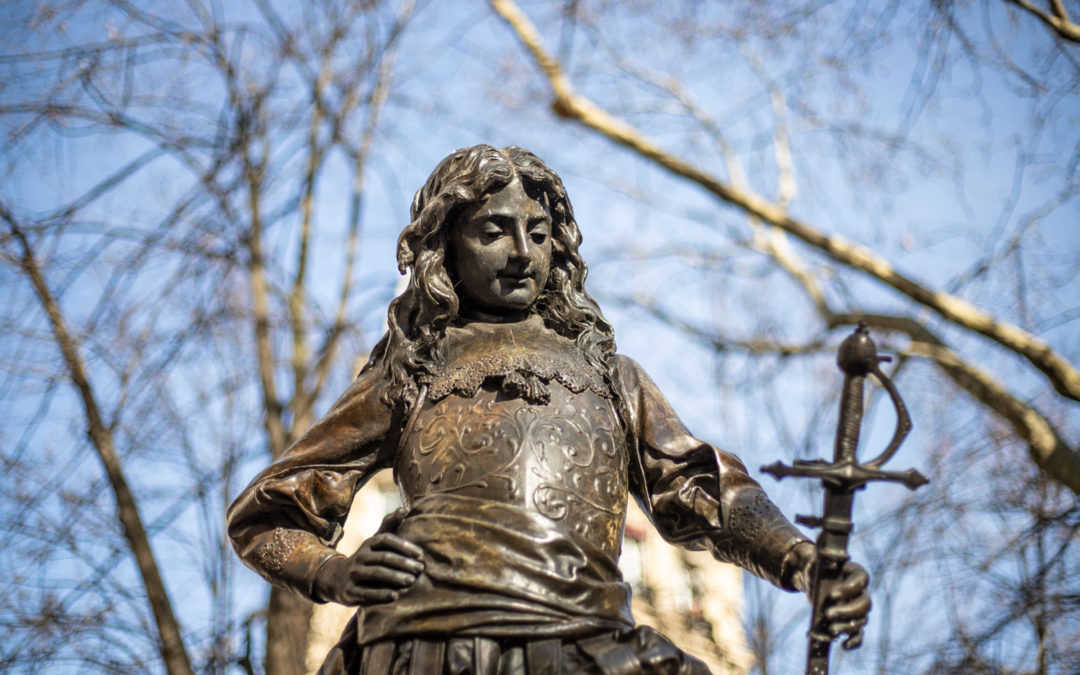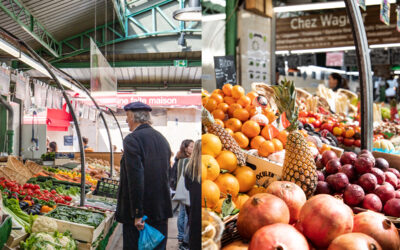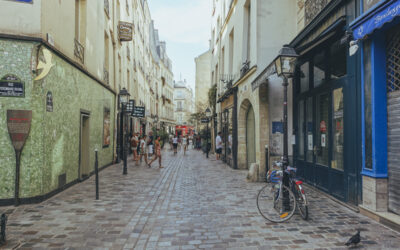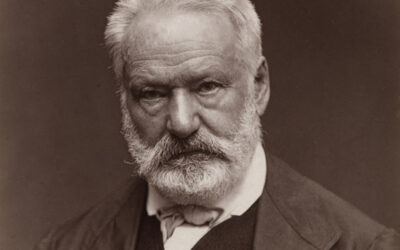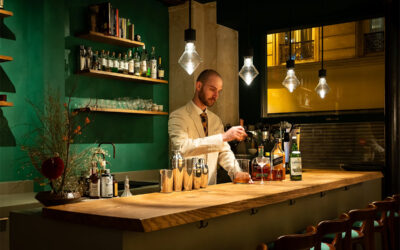It is a lovely, discreet and original statue. It represents Turenne, but Turenne as a child, with wavy hair, a sword in his hand and his shoe treading a cannon barrel. At the intersection of Rue Debelleyme, Rue de Normandie and Rue de Turenne, this bronze is moving by its small size, which makes its subject larger than life, and by its location.
Unlike Parisian statues, often placed prominently in busy places, this statue is in fact located a little away, on a simple sidewalk on a secondary axis, near a bench, under a tree. The result is a feeling of humanity and intimacy with this character that we encounter every day on the way to the bakery or the metro.
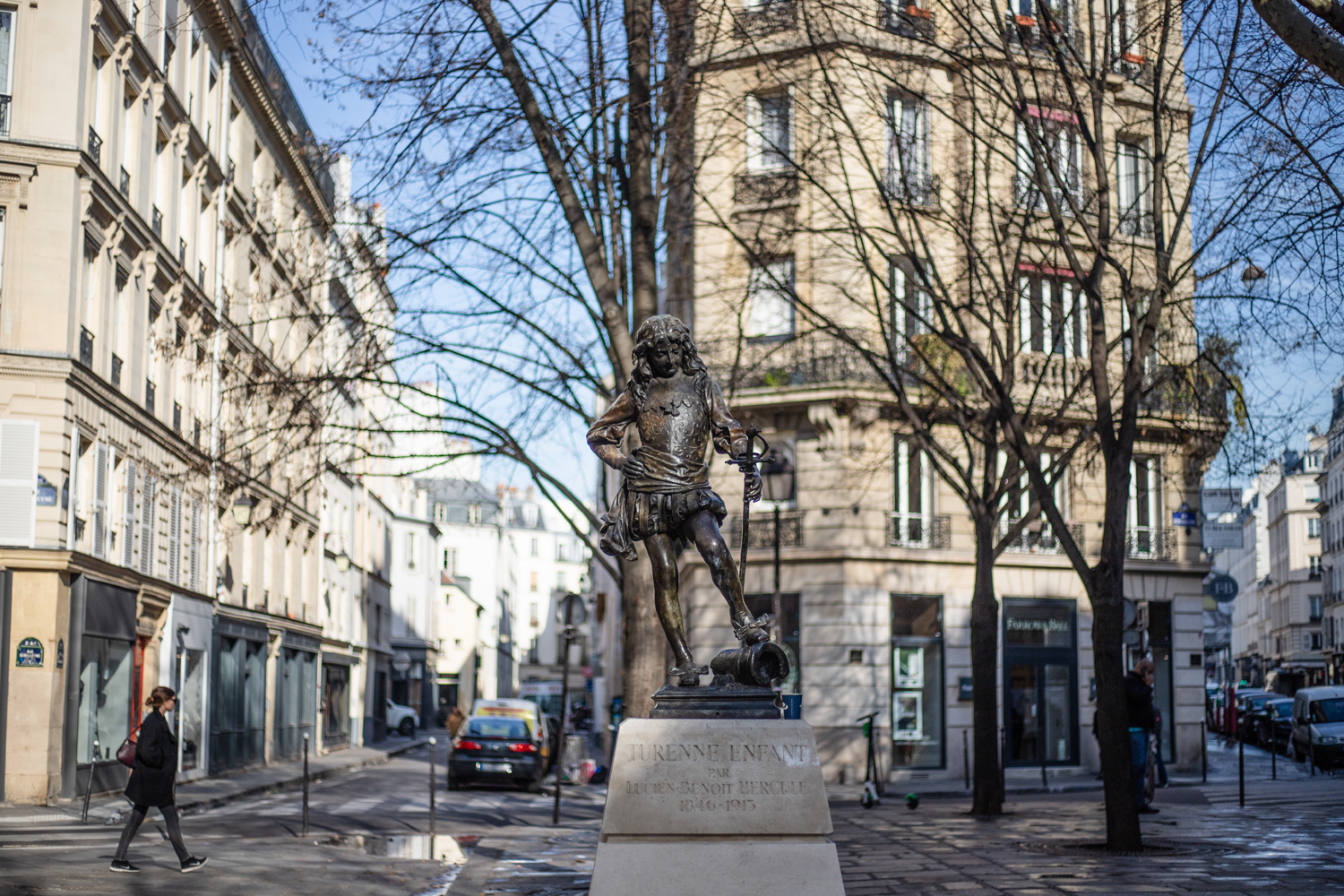
Despite his pedestal, this child Turenne speaks to us at human level. He speaks to us informally and we got used to him like a kid from the neighborhood. The work is by Lucien Benoit Hercule (1846-1913), an artist from Toulon who worked for the Paris City Hall, which led him to create this statue.
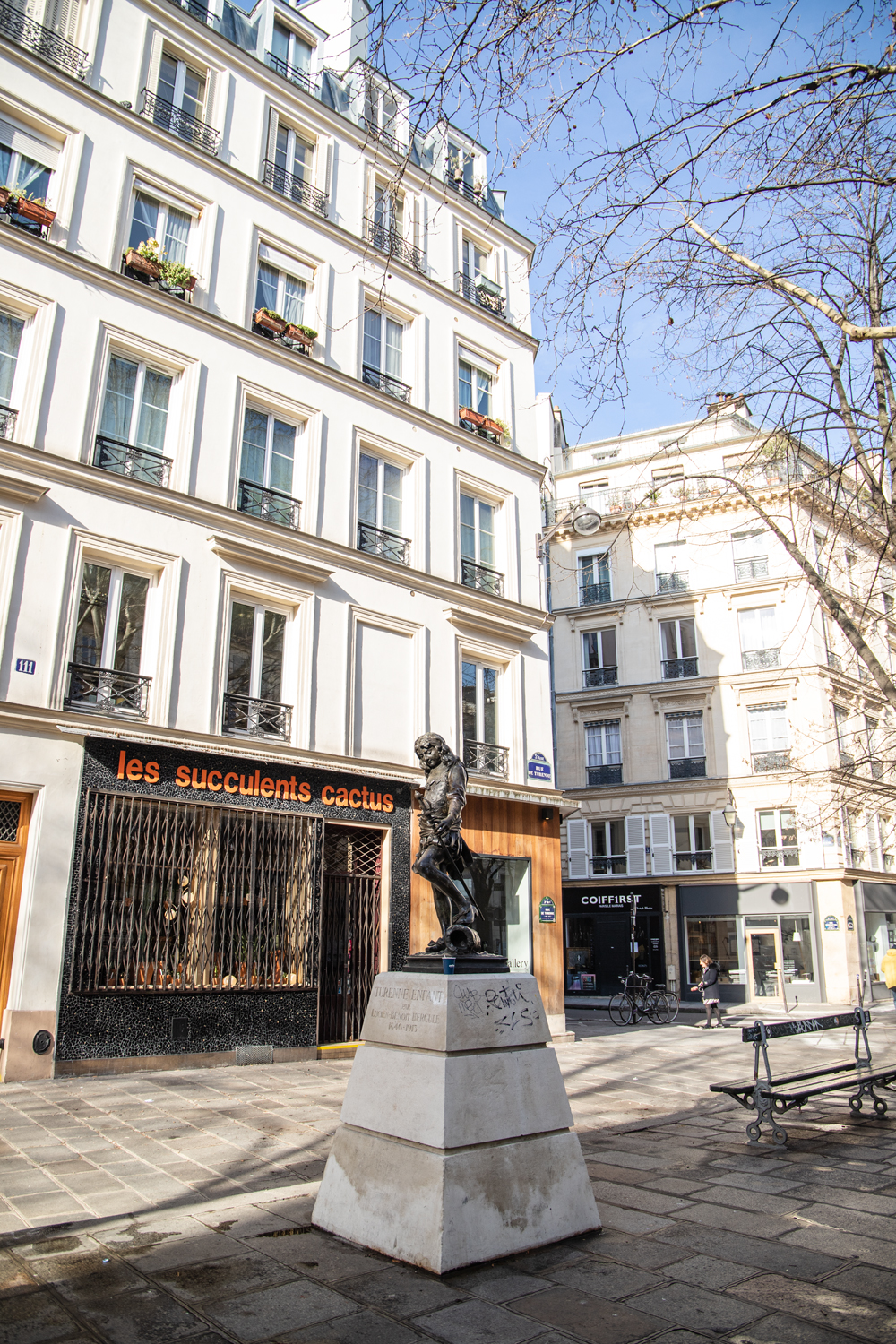
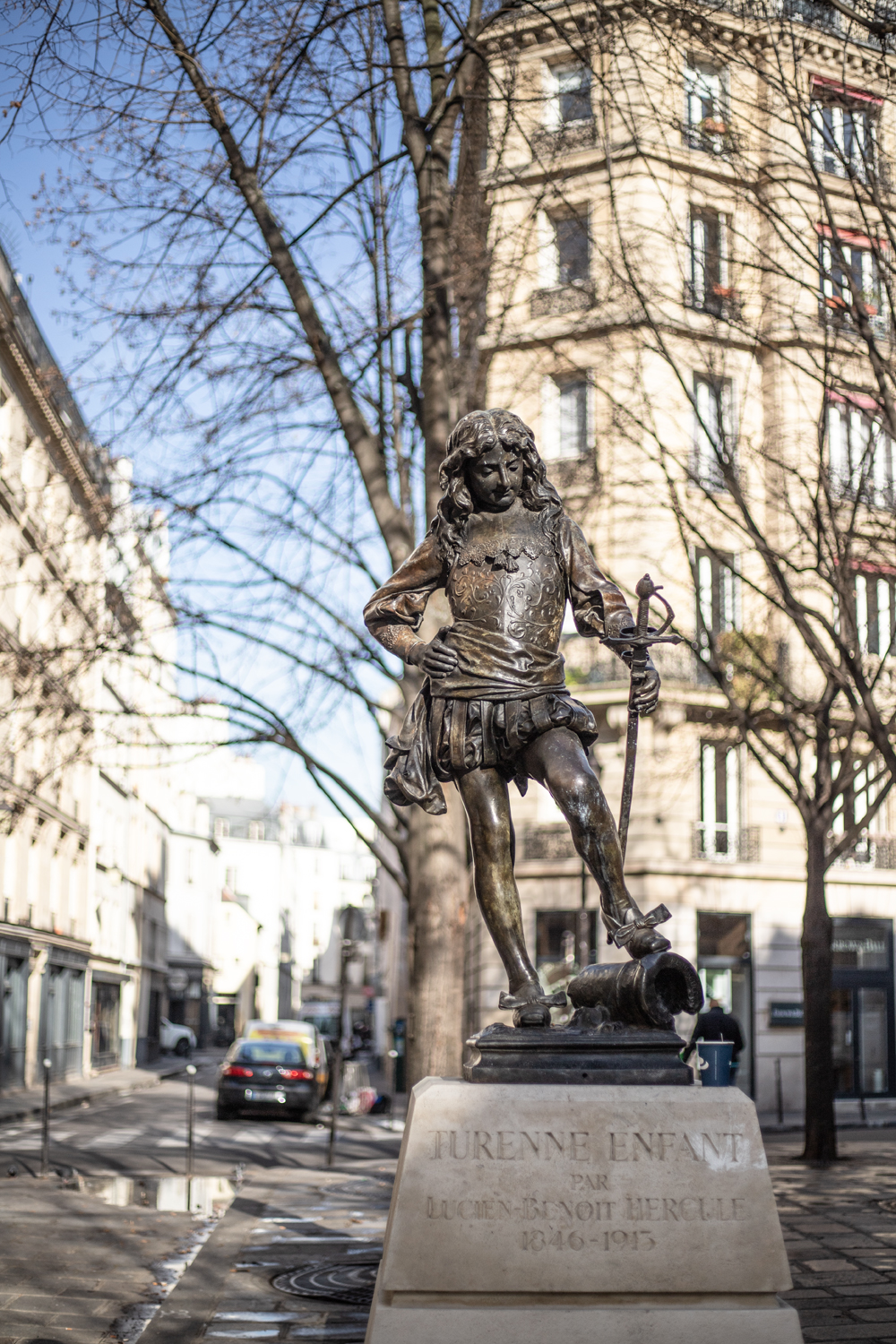
As for Turenne, he is, as everyone knows (or not), a French hero. Born in 1611 in Sedan, Henri de La Tour d'Auvergne went down to posterity under the name of Viscount de Turenne. This soldier was one of the best generals of Louis XIII, then of Louis XIV. Popular figure, talented strategist, promoted Marshal of France in 1643 and general marshal of the king's camps and armies in 1660, he is a military glory par excellence of the Grand Siècle. In Germany, in Holland, in Alsace, in the Vosges, on the Rhine, in Flanders, his feats of arms and victories are innumerable. It was he who conquered Roussillon, then annexed by Richelieu during the Treaty of the Pyrenees in 1659, thus expanding France.
In 1652, Turenne won, very close to the location of the statue, the famous Battle of Faubourg Saint-Antoine, in front of the Porte Saint-Antoine, on the site of today's Place de la Bastille. He defeats the Prince of Condé who then threatens the kingdom of which the young King Louis XIV is only fifteen years old. Turenne is also a true “Maraisian”. He lived for a long time in a private mansion, which has now disappeared, on rue de Turenne, between numbers 66 and 70.
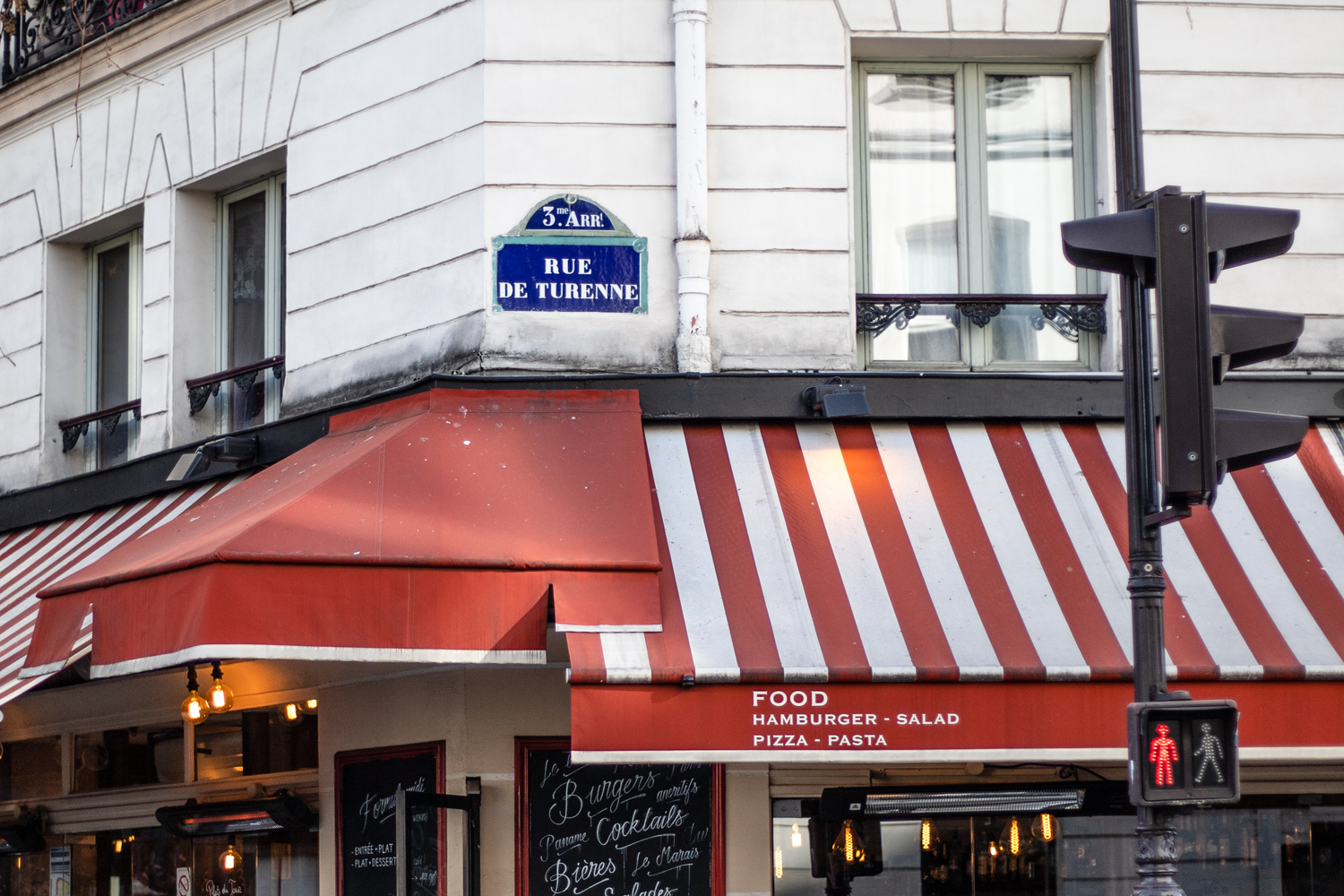
Text: Axel G.
Photos: ©Anaïs Costet
18.02.19
FOR PASSIONATES OFUS
The Enfants Rouges market, everyone loves it
Restaurants, merchants, a photo store, a bookstore... This is how the Red Children's Market presents itself, unique in its kind in the Marais and its capital because it is the only one to offer such a varied and varied range of restaurants. qualitative.
The Marais Jewish quarter in Paris
From the 13th century, the Marais was home to a Jewish community which remained there until its expulsion in the 14th century. Fleeing poverty and persecution, Jews from Eastern countries and those from Alsace settled there in the 19th century. Around rue des rosiers and Place Saint-Paul renamed Pletz…
Victor Hugo, the writer with a thousand talents
Born in 1802, Victor Hugo became a social writer, a playwright, a poet, a novelist and a romantic designer. Nicknamed the man-ocean then the man-century, he is a political figure and a committed intellectual. He found success with Notre-Dame-de-Paris in 1831 and with Les Misérables in 1862.
NOW ON THE MOOD MARSH
Millet, from the mountains to the Marais
From the top of this outdoor and technical clothing store, a hundred years of family history gaze down upon you. Created in 1921 in Chamonix, the Millet brand is still managed by the family of the same name. It is therefore a bit of French heritage and know-how that arrives from the Alps to settle in the Marais…
Divine brunch at the foot of Notre-Dame
Of course, officially, it is not the Marais. But at Son de la Terre, a barge recently moored at the Montebello quay (5th), the 4th arrondissement is in sight. Moreover, this one is incredible: on one side, it is Notre-Dame flooded with sunlight; on the other, the quays, the book sellers, the walkers, the joggers.
Saka, a cocktail bar like in Tokyo
Here is an address which gives the measure of the transformation of the Marais. And it's enough to silence the grumpy people whose mantra is: “It was better before…” No, everything was not better “before” in the Marais. Besides, there was no American bar like Saka, which cultivates a form of excellence that can only be found in Japan.

